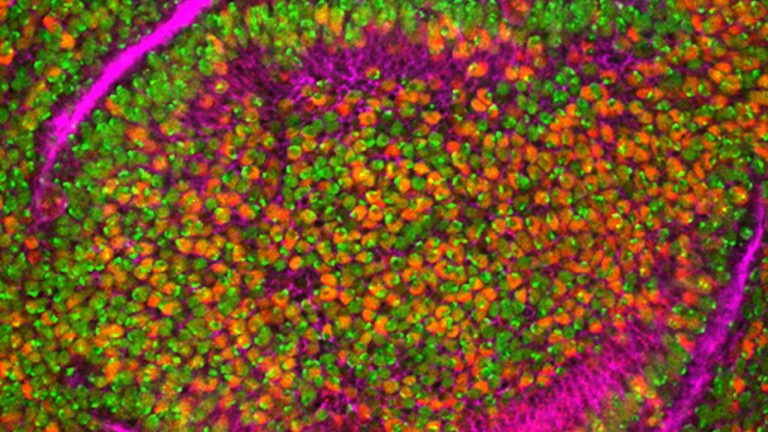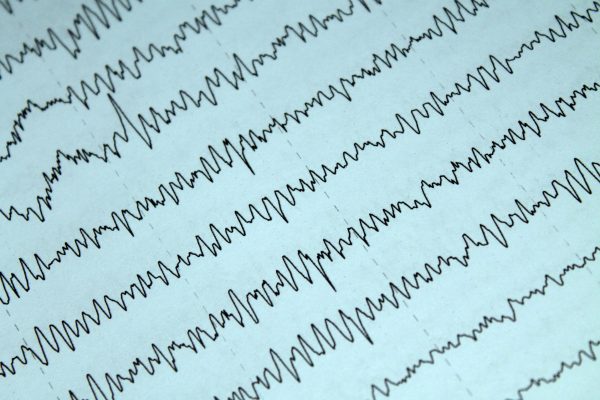by: Niharika Desaraju
Cells communicate with each other by sending and receiving signals. One way to receive a signal is by binding with a receptor on another cell. The ability of two membranes to interact with each other is highly dependent on the proteins that are located on the surface of the membranes. These proteins can be categorized in two ways: binding and non-binding proteins. Binding proteins are directly involved in holding membranes together, therefore have a significant effect on the communication between two cells. Scientists have previously not been completely familiar with the effects of nonbinding proteins on a cell’s ability to communicate. Recently, the spatial organization of binding and non-binding proteins has been recognized as critical for communication. Daniel Fletcher and his lab, at the University of California, Berkeley, set out to try and understand the interplay of protein size and membrane properties on the arrangement of binding and nonbinding proteins on the membrane’s surface.
As an in vitro model, the researchers created a simplified membrane system using giant unilamellar vesicles with green fluorescent proteins and mCherry, a red fluorescent protein, as synthetic binding and nonbinding proteins respectively. Researchers then studied the effects of changing variables such as protein height and protein crowding.
To understand the effects of protein height on the segregation of membrane proteins, researchers separately observed three nonbinding proteins of different heights, single-, double-, and triple-length, with the shortest binding proteins. What researchers wanted to observe is a phenomenon known as “protein exclusion”, where certain proteins are not integrated into the membrane surface at the region at which two cells are bound. Researchers found that single-length nonbinding proteins were partially excluded and double-length proteins were excluded even more, while triple-length nonbinding proteins were excluded as much as the double-length, indicating a limit to protein exclusion. These patterns of exclusion are attributed to the fact that double and triple-length proteins are larger than the gap between two membranes, so membrane-bending must occur in order to accommodate the length of the surface protein.
The exclusion of long, nonbinding proteins can be explained by membrane bending, but single-length proteins are smaller than the gap between membranes, signaling that there is another factor that affects protein segregation. Researchers hypothesized that lateral crowding, microscopic interactions that can limit the span of proteins on the same membrane, can affect protein exclusion.
In order to determine whether observed exclusion is due to lateral protein crowding, researchers lowered the concentration of the binding protein. This resulted in a proportional decrease in total protein density which consequently led to a decrease in single-length, nonbinding protein exclusion. Overall, the experimental data showed that a combination of changes in protein height and lateral crowding can determine protein exclusion.
To more precisely understand the relationship between lateral crowding, protein height, and membrane gap, researchers used Monte Carlo simulations in an attempt to validate their experimental data. Monte Carlo simulations are part of a class of computational algorithms that use repeated sampling to find a mathematical formula to predict behavior. Researchers constructed a simulation of a two membrane surface with gap size 10 nm, induced by double-length binding proteins, and further seeded the membrane with nonbinding proteins ranging in height from 1 nm to 20 nm. The simulations indicated that nonbinding proteins that are more than 2nm taller than membrane gap are excluded. When simulating the effects of lateral crowding, a decrease in the binding protein density decreased the level of exclusion on the nonbinding protein, as experimentally predicted. Researchers also tested membrane rigidity, the viscosity of the lipid bilayer of a cell membrane. They found that increasing rigidity caused a more severe transition between the maximum exclusion and maximum inclusion of nonbinding proteins.
This research provides a framework for predicting the size-dependent organization of both binding and non-binding proteins at membrane interfaces. Developing a deeper understanding of the behavior of membrane proteins has significant implications such as helping us develop a better understanding of cell-to-cell relationships, particularly those including T-cell immunological synapses. For example, CD45 is a protein tyrosine phosphatase, receptor type, C which is an enzyme known to signal molecules that regulate a variety of cellular processes including cell growth, differentiation, mitotic cycle, and oncogenic transformation. Specifically expressed in hematopoietic cells, CD45 is highly expressed in lymphomas, B-cell chronic lymphocytic leukemia, hairy leukemia, and acute nonlymphocytic leukemia. The ability to regulate and exclude CD45 could potentially result in a deeper understanding of how a more targeted treatment to leukemia could work since the exclusion of CD45 results in T-cell activation.
Photo by National Cancer Institute on Unsplash




